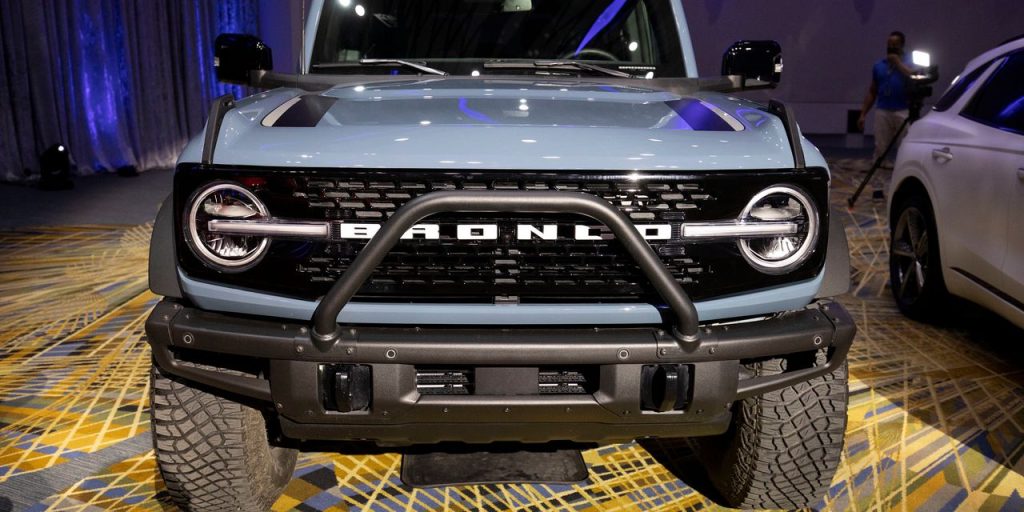The Big Three U.S. carmakers saw inventories rise despite the six-week-long United Auto Workers strike, but worries that consumers are pinched have lingered and the stocks remain under a cloud.
With the inventory uptick, the U.S. car industry seems to have averted a scenario in which lower inventories would lead to higher prices, likely the result of “a more protracted strike,” Deutsche Bank analyst Emmanuel Rosner said in a note Thursday.
Rosner, citing Motor Intelligence and Wards data as well as internal numbers, said that Ford Motor Co.
F,
General Motors Co.
GM,
and Stellantis NV
STLA,
all saw their inventories increase in October.
Inventory at Ford hovers at 70 days’ supply, or four more days than in September; GM’s is at 58 days, or nine days more month over month, and Stellantis’s is at 92 days, or 11 more days.
Earlier Thursday, Ford reported October sales that slipped 5% to 149,938 vehicles.
Sales of the Bronco, whose production at a Michigan plant was one of the first to be halted due to the strike, were down 56% year over year, Ford said. GM and other carmakers have switched to reporting quarterly sales and are scheduled to update investors in early January.
The carmakers have reached tentative agreements with the union after a strike that broke with tradition and hit assembly lines and other facilities of all three companies. The agreements are going through ratification steps.
Workers scored big wins, including pay raises of 25% over the life of the four-year contract plus cost-of-living adjustments, the end of several wage tiers, and better retirement benefits.
Carmakers entered the strike with higher inventories than in previous months, providing a welcome cushion as the labor action ground on and more workers walked out each week.
Rosner put October new-car sales in the U.S. at 15.6 million, annualized, slightly under September’s numbers but an uptick from the October 2022 seasonally adjusted annual rate of 15.3 million vehicles.
He forecast the 2023 SAAR to end up at 15.3 million vehicles, “a solid improvement” from 13.8 million in 2022 and thanks mostly to a rebound in fleet sales, and slightly above 2021’s 14.9 million.
A solid SAAR, however, “will not remove investor fears of consumer distress,” Chris McNally at Evercore ISI said on his note Thursday. Carmakers “will now need to balance incentives with underlying unit replacement demand.”
Average car prices declined from peak, and more discounts and incentives appeared, McNally said. Those factors, coupled with the heightened demand for wholesale, or those coming from rental-car and other companies updating their fleet, “have been the driving force behind demand.”
Lost North American production due to the strike looks to have been around 215,000 vehicles, “much better than expected,” the analyst said.
Oxford Economics warned, however, that the impact of the strike may be yet to show up in data.
It is possible that automobile output fell by as much as 20% to 25% in October, “which would have reversed a chunk of the improvement in vehicle supply over the past year” and lead to higher prices, analysts said in a note late Wednesday.
“However, we think the bigger factor driving auto sales from here is likely to be mounting headwinds to demand,” mostly due to higher interest rates and tightening lending conditions, they said. “We also expect the unemployment rate to rise modestly over the coming quarters, which will contribute to softening demand.”
The analysts forecast weaker automobile sales in the fourth quarter, and sales to remain weak through the first half of 2024 before rebounding later in the year as interest rates begin to decline.
Meanwhile, shares of Ford and GM still struggle this year, with Ford’s stock down about 13% in the year to date, and GM’s stock down 15%. Those contrast with gains of around 12% for the S&P 500 index
SPX
in the same period.
Read the full article here




